
Dichrorampha acuminatana is a moth of the family Tortricidae. It is found in Europe and the Near East.
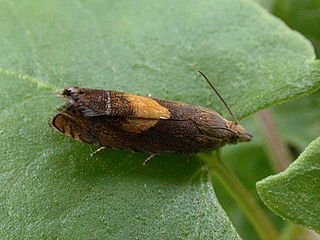
Dichrorampha petiverella is a moth of the family Tortricidae. It is found in the Palearctic realm.
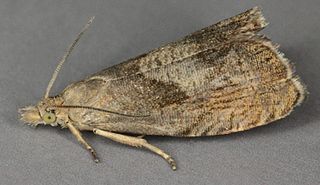
Dichrorampha simpliciana is a moth of the family Tortricidae. It is found in Europe and the Near East.

Grapholita funebrana, the plum fruit moth or red plum maggot, is a moth of the family Tortricidae. It is found in the Palearctic realm. Like many of its congeners, it is sometimes placed in Cydia.
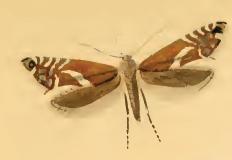
Glyphipterix haworthana, Haworth's glyphipterid moth, is a moth of the family Glyphipterigidae. It is found in most of Europe, as well as North America.

Glyphipterix equitella is a moth of the family Glyphipterigidae. It is found from Fennoscandia to the Iberian Peninsula, Sardinia, Sicily and Crete and from Ireland to Romania.

Dichrorampha alpinana, the broad-blotch drill, is a species of moth of the family Tortricidae. It is found in almost all of Europe.
Helcystogramma gradatum is a moth in the family Gelechiidae. It was described by Edward Meyrick in 1910. It is known from north-eastern India.
Helcystogramma leucoplectum is a moth in the family Gelechiidae. It was described by Edward Meyrick in 1911. It is known from India, Java, Indonesia and Sri Lanka.

Grapholita janthinana, the hawthorn leafroller, is a moth of the family Tortricidae. It was described by Philogène Auguste Joseph Duponchel in 1843. It is found in most of Europe, except most of the Balkan Peninsula, Ukraine, Lithuania and Estonia. The habitat consists of hedgerows, gardens and woodland edges.
Idiophantis habrias is a moth of the family Gelechiidae. It was described by Edward Meyrick in 1904. It is found in Australia, where it has been recorded from Queensland.
Polyhymno oxystola is a moth of the family Gelechiidae. It was described by Edward Meyrick in 1913. It is found in Mpumalanga, South Africa.
Psittacastis gaulica is a moth in the family Depressariidae. It was described by Edward Meyrick in 1909. It is found in Bolivia.
Psittacastis pictrix is a moth in the family Depressariidae. It was described by Edward Meyrick in 1921. It is found in Colombia.

Epinotia abbreviana is a moth of the family Tortricidae. It is found in Europe and was first described by Johan Christian Fabricius in 1794.
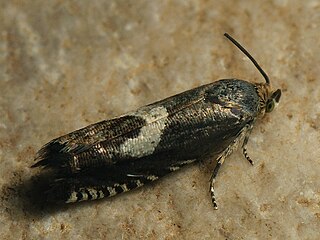
Grapholita orobana is a moth belonging to the family Tortricidae. The species was first described by Georg Friedrich Treitschke in 1830. It is native to the Palearctic.

Cydia coniferana is a Palearctic moth belonging to the family Tortricidae. The species was first described by Saxesen in 1840. The wingspan is 11–13 mm. The forewings are dark fuscous, the costa posteriorly with white strigulae, some ending in obscure leaden-metallic marks. There is an irregular erect white dorsal median spot, including a dark fuscous strigula. The ocellus is edged with leaden-metallic, and crossed by several black dashes. The hindwings are fuscous. The larva is dull yellowish ; head pale brown
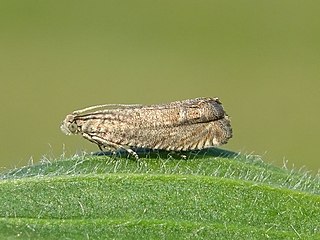
Cydia microgrammana is a moth belonging to the family Tortricidae. The species was first described by Achille Guenée in 1845.

Pammene ochsenheimeriana is a moth belonging to the family Tortricidae. The species was first described by Friederike Lienig and Philipp Christoph Zeller in 1846.

Dichrorampha plumbana is a moth belonging to the family Tortricidae first described by Giovanni Antonio Scopoli in 1763. It is native to the Palearctic including Europe.













